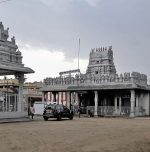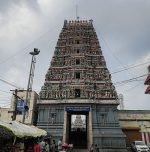Somnath temple: A timeless symbol of faith and resilience

Somnath Temple, located at Prabhas Patan near Veraval in Gujarat, is one of India’s most revered pilgrimage destinations.
As one of the twelve sacred Jyotirlingams of Lord Shiva, it draws thousands of devotees each year.
Standing on the shores of the Arabian Sea, this magnificent temple blends mythology, history, and spiritual devotion.
The history of Somnath is both vast and layered. Some accounts suggest that the first temple existed even before the Christian era.
Historical references indicate that the second version was built by the Vallabhi kings between 408 AD and 768 AD.
Over centuries, the temple came to be known as the eternal shrine, as it was destroyed and rebuilt repeatedly by devotees determined to preserve its sanctity.
Archaeological findings reveal that the temple was reconstructed at least three times before the raid of Mahmud of Ghazni in 1026 AD.
After this attack, it faced destruction nearly six more times under various invaders, including the Delhi Sultans, Portuguese forces, and during the reign of Aurangzeb.
Despite this, Somnath kept rising from the ruins, each reconstruction reinforcing a spirit of unbroken faith.
When India gained independence, Somnath lay in ruins once again. In 1947, Sardar Vallabhbhai Patel, moved by its condition and legacy, initiated the reconstruction of the temple.
Architect Prabhashankar Sompura designed it in the traditional Chalukya style, and the temple was inaugurated by President Dr Rajendra Prasad on 11 May 1951.
This marked not just the rebuilding of a shrine but the revival of a national symbol of unity and pride.
According to ancient legends, the Moon God, Chandra Dev, built the first temple in gold after being freed from a curse by Lord Shiva at this very site.
Later yugas saw reconstructions in silver, wood, and stone, each adding to its rich mythological fabric.
Somnath’s location enhances its spiritual charm. A pillar near the temple states that from this point to Antarctica, no land exists, symbolising infinity and divine vastness.
Standing before the endless sea, visitors often experience a deep sense of calm and connection.
Somnath is not merely a place of worship; it is a sacred site. It is a testament to courage, unity, and the will to rise again, no matter how many times life brings one to the ground.
Its story continues to inspire millions, reminding us that resilience and faith can rebuild even the most shattered foundations.
Image Credit: B. SurajPatro1997, CC BY-SA 4.0, via Wikimedia Commons
Image Reference: https://commons.wikimedia.org/wiki/File:Somanath_mandir_(cropped).jpg








